Markhor
Capra falconeri heptanari
-
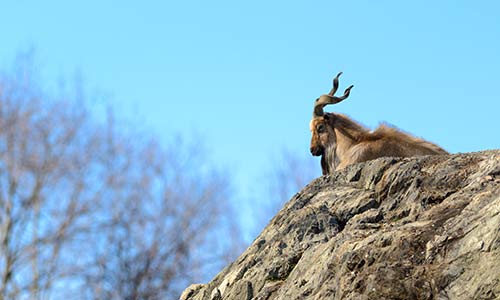
-

-
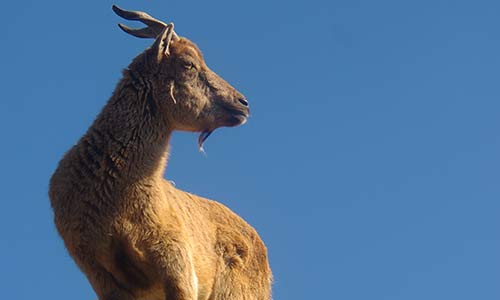
-
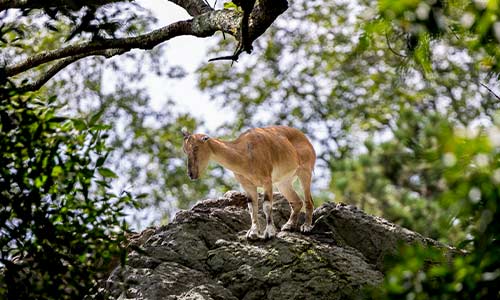
-
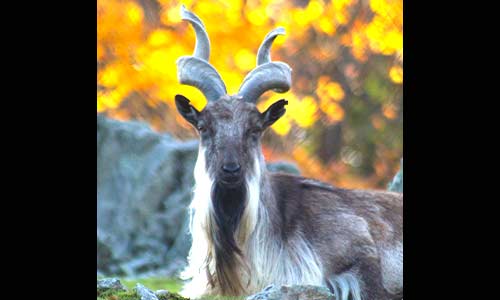
-
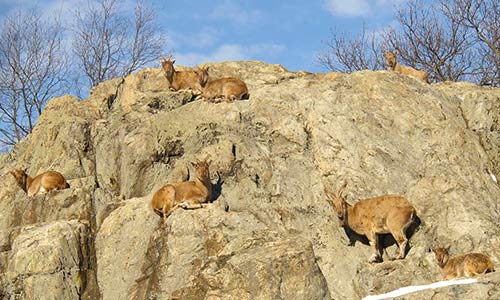
-
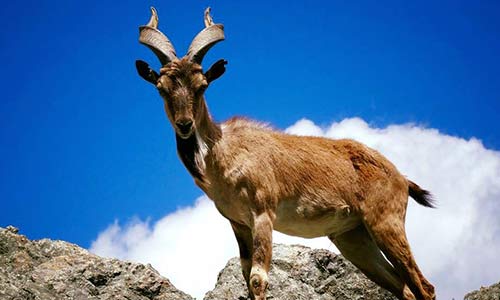
-
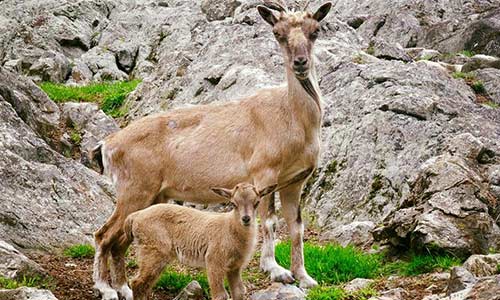
-
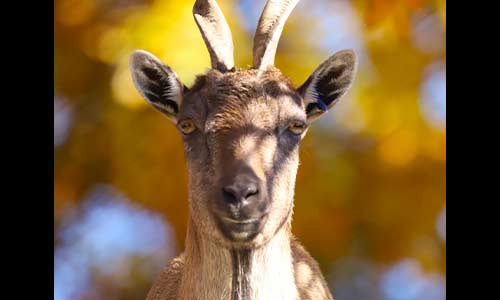
-
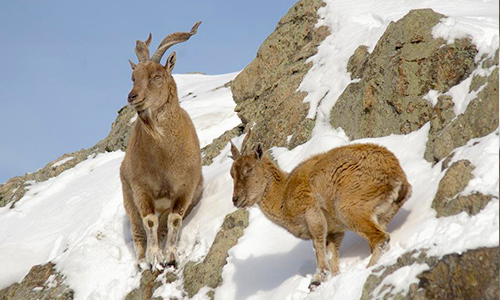 Markhor
Markhor -
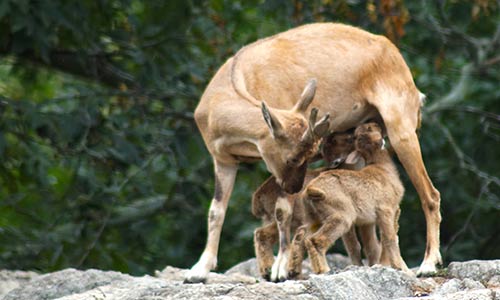
-
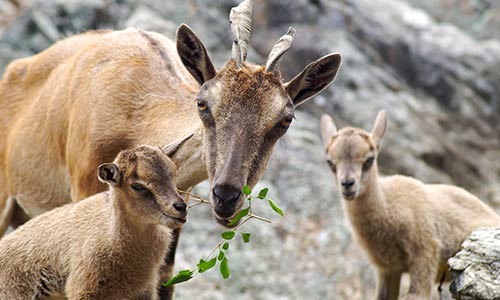
-
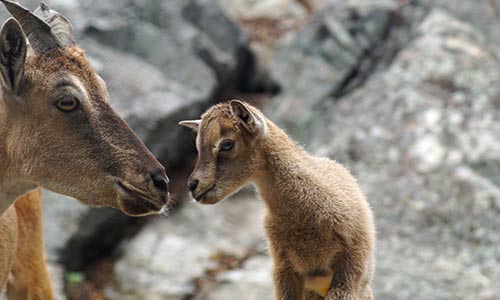
-
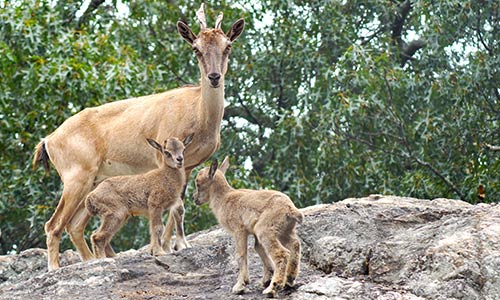
-
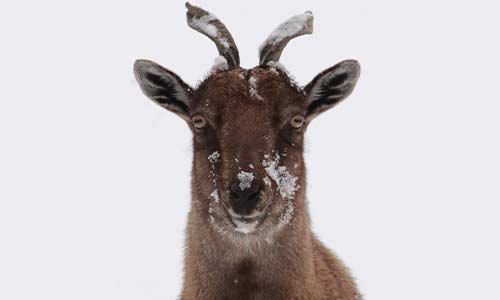
-
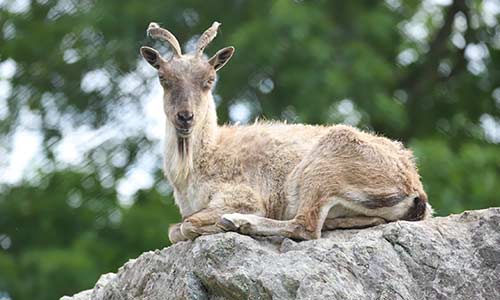
-
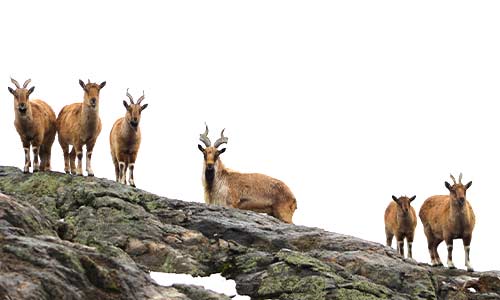
-

-

-

-

About the Markhor
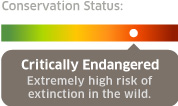
Geographic Range:
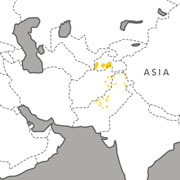
Class: Mammalia
Order: Artiodactyla
Family: Bovidae
Genus: Capra
Species: falconeri heptanari
The markhor is the largest of the wild goat species, with broad hooves and striking spiral horns that can grow to five feet long in mature males. These goats live in herds of 30-100 females, which are joined by males during the fall mating season. Markhor is a Persian word meaning “snake-eater” or “snake-killer,” which may refer to its spiral horns or how it easily kills snakes by stepping on them with its wide hooves.
Conservation Note:
Markhors are listed as endangered; the subspecies, C.f. heptanari, are critically endangered.
Markhor Facts
Appearance:
Markhors are the largest of the wild goat species. They have broad hooves and striking spiral horns that can grow to 5 feet long in mature males; female horns are smaller, around 2 feet. The markhor's coat is reddish gray with a dark stripe running the length of its back. Males have thick, long beards, manes and tufts of hair on their legs, while females may only have thin, short beards.
Size:
Height: 2 to 4 feet
Length: 4.5 to 6.2 feet
Weight: Females weigh 70 to 88 pounds. Males weigh 170 to 242 pounds.
Diet:
Markhors graze primarily on grasses and browse on shrub leaves and twigs.
Reproduction:
The markhor's breeding season is from April to June. One to two young are born after a 155-day gestation period. Females reach sexual maturity at around 2 years of age. Males reach sexual maturity at around 4 to 5 years of age.
Behavior:
Female markhors live in herds while males only join herds during the breeding season. Markhors are most active during the early morning and late afternoon. Their wide hooves help them maintain stable footing when climbing their mountainous habitat. During the warm spring and summer months, they migrate to higher altitudes on the mountains. During the late fall, they descend to lower altitudes to graze on more plentiful vegetation at the tree line.
Habitat/Range:
Markhors live in the Himalayan Mountain Range around or above the tree line. They range across northern India, Pakistan, Afghanistan and Turkestan.
Median Life Expectancy:
10 to 13 years
Threats:
Markhors are poached for their meat and their horns that are believed to have medicinal qualities. They're also threatened by habitat loss and competition from domestic livestock.
You Can Find This Animal in the Himalayan Highlands
Helping Horns!
Markhors use their horns for rooting in soil, stripping bark from trees, fighting, and attracting members of the opposite sex. Because they're an extension of skin and contain blood vessels, horns also help cool the markhor's blood by acting as a built-in radiator.
You might also like
At Franklin Park Zoo:
At Stone Zoo:























